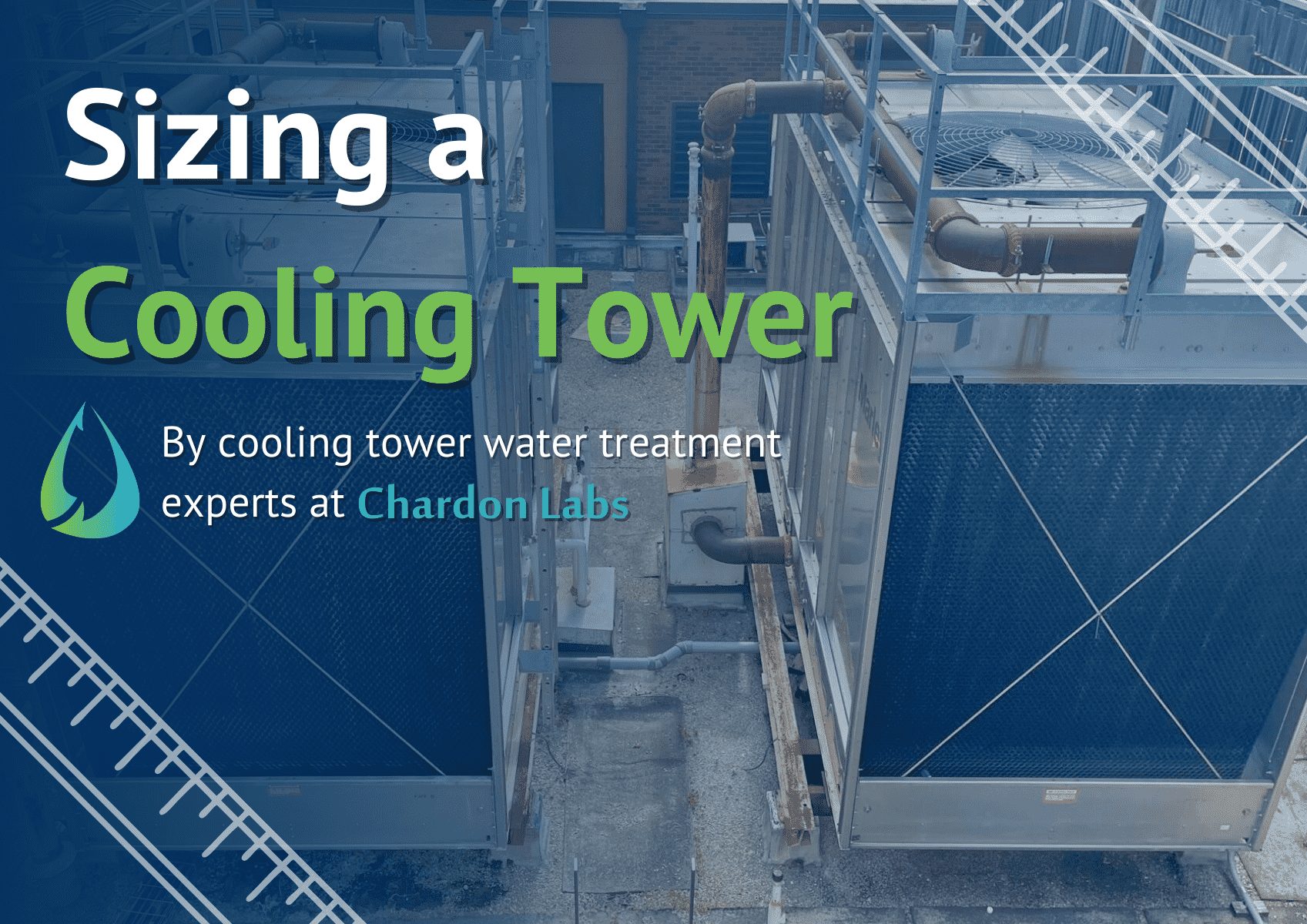
For new construction, replacement, or renovation, it is important to consider the size of your cooling tower. Cooling towers are an essential part of temperature regulation for many hospitals, apartments, manufacturing plants, etc. It is essential to make sure that the tower has the correct capacity to be able to handle all of the cooling needs.
Having a cooling tower that is too small could mean hotter living temperatures, delayed production, and system efficiency problems. The dimensions and capacity (load) that it will have need to be tailored to the specific needs your facility has for a tower. To see an in-depth comparison on the different types of cooling towers view this article.
For professional help regarding cooling tower efficiency, sizing, treatment, and more contact us here.
Larger cooling towers have more air flowing through the tower. This, in turn, leads to better cooling. Larger cooling towers cost more to construct and maintain so it is necessary to consider various factors to determine how large of a tower is needed for your situation. It should be tailored to your specific industry. Whether that is residential hvac, health care, or industrial manufacturing, each one has different needs for the function of its cooling tower.
One of the important factors when considering cooling tower size is wet bulb temperature. The temperature of a standard cooling tower is usually 78°F. The wet bulb temperature describes how much water the temperature of the air that is coming into the tower can hold. You need your tower’s steam to reach a certain temperature to evaporate the water depending on the outside temperature. It factors in both humidity and ambient air temperature. You will need a wet bulb thermometer connected to your cooling tower to find out this temperature.
Another factor is range. Range describes the difference in temperature of the water entering and leaving the tower. The range can be calculated by subtracting the temperature difference between water incoming to the heat exchanger and the outbound water from the heat exchanger. The incoming water is hot (HWT) and the outbound water is cold (CWT).
Formula: Range= HWT-CTW
Additionally, the heat load is an important factor that influences size. Heat load is directly related to tower size. The larger the heat load, the larger the cooling tower will have to be if the other factors are constant. This can be calculated using the aforementioned factors. To calculate this you need to find out your gallons per minute as well. Volume will be in gallons and time will be in seconds when calculating GPM.
Formula: Gallons Per Minute (GPM)= Volume/Time
Formula: Head Load Capacity= GPM*500*Range
Lastly, the approach is an essential factor that affects size. The approach describes the variation between the cold water entering the basin temperature and the wet bulb temperature. Lower approach temperatures generally require a bigger tower, however, it is important to consider all of the factors.
Formula: CWT-WBT
The other factors are inversely related to tower size. If the wet bulb temperature, approach, or range is not constant, then one of those increasing while the others are constant would mean a smaller size tower is needed.
Sizing and choosing the correct cooling tower is a complicated task. At Chardon Laboratories we service hundreds of cooling tower locations regularly and we know what is required. For any cooling tower help contact us here.